Some birds, fish, mammals, and insects can congregate in large flocks of millions to trillions. Join Toplist to find out the largest herds in the animal world.
1 Australian Red Crab
In the rainy season, millions of red crabs on Christmas Island, Australia, migrate to the sea to start a new breeding season. The migration of red crabs will start from the forests of Christmas Island to the coast of the Indian Ocean. The number of red crabs in the migratory crab population can range from 40 million to 120 million. During the red crab migration season, signs blocking the way for vehicles and pedestrians are placed in many parts of the area.
The ancient inhabitants of Christmas Island rarely mentioned this crab. It is likely that the current extreme population of red crabs is the result of the extinction of the Maclear rat, the limiting factor in red crab populations. The survey showed an average of 0.09–0.57 adult red crabs per square meter, representing a total population of about 43.7 million red crabs on Christmas Island as a whole. Others estimate that 120 million red crabs exist on Christmas Island, but there is no clear evidence.
An exploding population of Anopolepis gracilipes (as an invasive species) that has just been introduced to Christmas Island by accident has had a negative effect on the red crab population on the island. It is estimated that about 10-15 million red crabs (accounting for one-third to one-quarter of the total number of red crabs) have been killed by A. gracilipes ants recently. In total, about 15-20 million red crabs have been wiped out by A. gracilipes ants from Christmas Island.
Every year from October to December, when it starts to rain, red crabs migrate on a large scale to the coast to breed. Each crab has to travel an 8-kilometer stretch in 9 to 18 days. The reason they can overcome such a long distance is because when it comes to breeding season, crabs secrete a lot of crustacean hyperglycemic hormone (CHH) that helps increase blood glucose levels, ensuring enough energy for them. long journey. Upon reaching the shore, female crabs will mate with male crabs in burrows that have been dug by the male, and after mating the female crabs continue to crawl to the sea to lay eggs. Contrary to other land crab species on the island, the red crab is the only crustacean species in which a male accompanies a female on her migration to the sea.
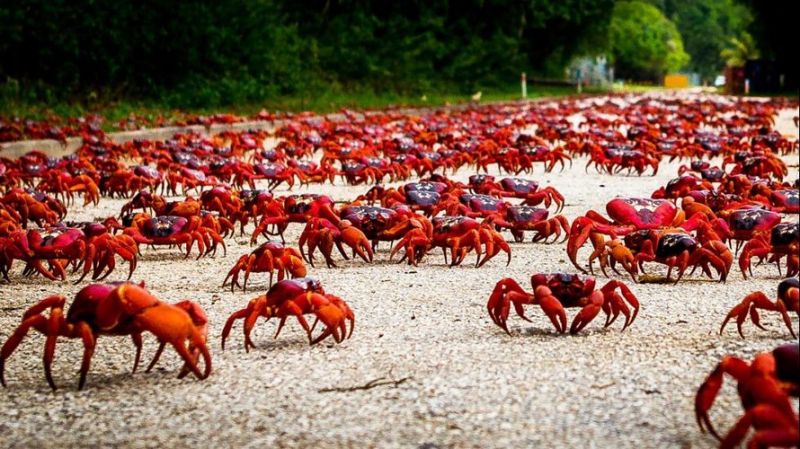

2 wildebeest
This species of antelope can gather in large herds up to tens of millions of animals. A herd of antelope in huge numbers can be more than 140 km long. However, today the wildebeest population is not as high as it used to be due to hunting, habitat loss and disease.
In the Maasai Mara reserve, a non-migratory blue wildebeest population has decreased from about 119,000 in 1977 to about 22,000 in 1997. The decline is attributed to increased competition. between cattle and wildebeest for grazing land is decreasing, as a result of changes in agricultural practices and possibly due to fluctuations in rainfall.
The blue wildebeest is both migratory and non-migratory. In Ngorongoro, most of them are less migratory and males maintain a territorial network year-round, although breeding is naturally seasonal. Females and juveniles form groups of about 10 individuals or combine in larger herds, and non-territorial males form celibate groups. In the Serengeti and Tarangire ecosystems, wildebeest populations are predominantly migratory, with herds of both males and females frequently moving, but small resident populations also exist. During the mating season, the male may mark his territory temporarily for a few hours or a day, or longer, and try to gather a few females to mate with him, but soon they must move, often move to establish some other temporary territory.
Every year, some populations of blue wildebeest in East Africa undergo a long-distance migration, seemingly timed to coincide with the rainy season and grass growth. The timing of their migration during both the wet and dry seasons can vary considerably (monthly) from year to year. At the end of the wet season (May or June in East Africa), wildebeest migrate out of dry areas into the dry season when there is a lack of water. When the rainy season starts again (several months later), they quickly return to the same area. The factors considered affecting migration are food abundance, available surface water, predators and phosphorus content in the grass.
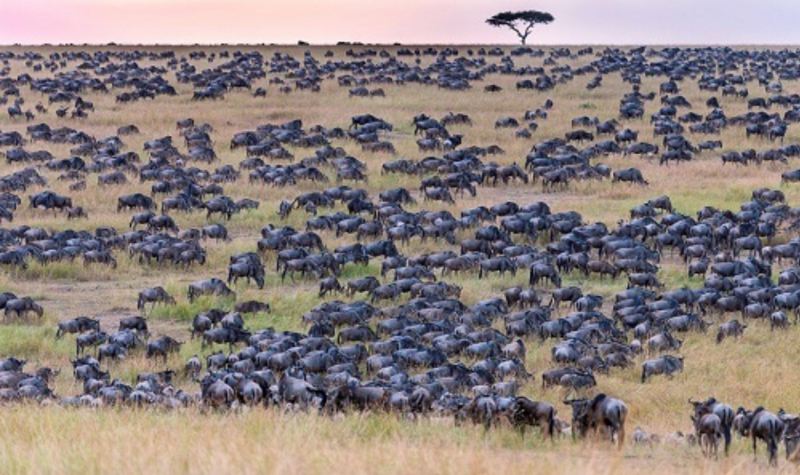

3 Herring
Gathering in schools is a common feature of fish. However, herring is the species with the largest number of fish concentrated in schools. As noted by the researchers, the number of fish in the herring school can be up to tens of millions, covering tens of square kilometers. Fish live in large schools to limit the risk of being eaten or focus on spawning time.
Herring is a fish like apricot but larger, with bluish skin, small bones, long, thin body, and equal jaws. Fish with small or missing teeth, thin round scales, easy to fall off, some species have comb scales, the ventral ridge of fish has serrated teeth. Herring has the habit of migrating in large flocks. Herring lives in the surface water layer, usually has no hiding place, has an elongated body, normal development of even fins, a strong tail, and a fast swimmer.
In the wild, herring is a prey fish for predators such as seabirds, dolphins, sea lions, whales, sharks, tuna, cod, salmon, and other large fish. Especially herring is a rich source of food for bald eagles. Herring is one of a group of small-bodied bony fish that survived the extinction disaster at the end of the Cretaceous period, and they still exist today in marine environments. Fossil herring in the western United States where Colorado, Utah, and Nevada meet.
In Vietnam, fishermen often call the species of herring they catch by their very own names. Accordingly, there are two types of herring, herring and herring. Herring is flat, with many greenish-white scales, white flesh, fragrant, fatty but with many bones. Herring is round, less scale, more fleshy, but red fish meat and not as delicious as cicada extract.


4 Argentinian Ants
Recently, scientists discovered a huge colony of Argentine ants with an ant population that could cover almost the whole world. The largest ant colony can extend nearly 6,000 km along the Mediterranean coast.
The Argentine ant, scientific name Linepithema humile, is a species of ant native to Argentina, Uruguay, and Paraguay. It is an invasive species in many Mediterranean climates around the world such as South Africa, New Zealand, Japan, Easter Island, Australia, Hawaii, Europe, and the United States. other native and widespread ant species.
Argentinian ants are inherently different in that they do not attack each other when they are not in the same nest as other ants, in a nest can see many queens that other ants do not have and this can be said to be how they succeed in fighting. invasion of native insects.
Argentinian ants can spread all over the world because they have two characteristics that distinguish them from other subtropical ants. Firstly, they can survive the cold winter in deep underground caves. Second, they are extremely aggressive and strong. Common ants live together very peacefully. Even when looking for food, they try to make friends with each other. But the Argentinian ant is a very stubborn species. Wherever they go, they will continuously attack the native ant nests there.
They destroy the nests of native ants, "expel" or kill the ants that live there. Each raid like this, Argentine ants mobilize tens of thousands of strong and aggressive ants to participate. Therefore, each advance of the Argentine ant will cause the native ants to step back, except for the honey ant.


5 Shrimp Krill
Shrimp krill are small crustaceans that live in large flocks. The density of individuals in the herd can reach 10,000 - 30,000 individuals per cubic meter. They can be found in every ocean in the world, but the largest population of krill is in the waters of Antarctica. The size of a giant swarm of krill shrimp is usually about 10 km long and 30 m deep.
Although small, krill shrimp are extremely important to the existence of the ocean and are concentrated in the largest numbers in the waters of Antarctica. Overfishing of krill shrimp not only severely degrades ocean biodiversity, but also affects marine fish populations and the world's fishing industry.
Krill floats on the dynamics of water currents, uses their hair-like swimming legs to navigate and filter food from seawater, and feeds on algae in the ice during the winter and summer months. spring.
Although individual krill shrimp are small, unimpressive and vulnerable in the dangerous ocean environment, many predators, the giant krill shrimp are an important bridge in the marine food chain , converting plankton cells into suitable energy for the many animals that rely on them for survival. The list of such animals is extensive, from tiny fish, seabirds, to the largest fish alive today on earth: the blue whale. This giant fish can eat 2,500 kg of krill per day.


6 Grasshoppers
The swarms of millions of locusts are a farmer's nightmare. Even many swarms of locusts have trillions of animals. One of the records for a giant locust swarm was recorded in North America in 1875. The size of this locust swarm is estimated at 500,000 square kilometers, equivalent to the area of the state of California, USA. The locust swarm has about 12.5 trillion.
The record for the largest swarm in the animal world belongs to grasshoppers. In East Africa in early 2020, a cloud of desert locusts swept across the sky, spanning thousands of square kilometers. "It was like a black blanket covering the sky, so dense that it was difficult to see the clouds," said researcher Emily Kimathi at the Center for Insect Physiology and Ecology in Kenya.
That particular event was the largest swarm observed in the Horn of Africa in 25 years. Experts estimate that they congregate at a density of about 50 million individuals per square kilometer, meaning that a single swarm of locusts would contain about 200 billion. Desert locusts are known for their ability to reproduce very quickly, able to multiply 20-fold in a three-month period.
200 billion is a staggering number, but data from the past show that locust swarms can outnumber locusts under ideal environmental conditions. In 1875, a meteorologist named Albert Child was stunned to see grasshoppers soaring through the sky in a huge swarm that covered much of the western United States. This species is the Rocky Mountain locust, and Albert estimates that it covers an area of 512,800 square kilometers.
This historic event is also known today as "Albert's locusts". Based on meteorologists' estimates, their number could be as high as 3.5 trillion. This is believed to be the largest number of animals in a herd that humans have ever recorded.

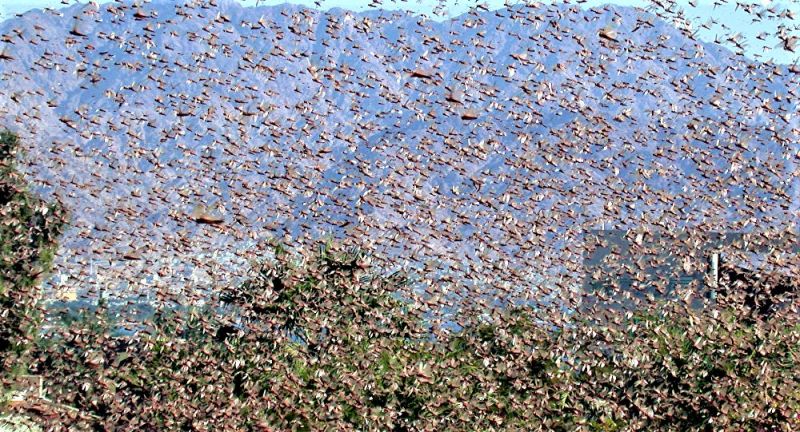
7 Ephemeral
An adult mayfly usually lives for one to two days. Usually, all the plankton will grow at about the same time, gathering in large flocks and filling the sky as they move. Because the life cycle of plankton is quite short, they live in concentration to maintain reproduction. Of the nearly 2,500 species of plankton in the world, about 630 are found in North America.
Plankton are a relatively primitive group of insects, exhibiting some archaic features that were probably present in the first flying insects. The larvae of plankton live in fresh water and live only in clean, unpolluted water. The plankton live in water, can live from 1 to 3 years, after molting ashore they can only live for a few short hours.
Zooplankton are floating animals that range in size from microscopic rotifers to as visible to the naked eye as jellyfish. The distribution of zooplankton is influenced by salinity, temperature and food availability in the environment. The smallest zooplankton can be described as recyclers of nutrients in the water column and are often associated with nutrient enrichment measures.
Larger zooplankton is an important food for bait fish and the larval stage of all fish. They also associate primary producers (plankton) with organisms of a higher or greater trophic level. The zooplankton community includes both groups: primary consumers that feed on phytoplankton, and secondary consumers that feed on other zooplankton.


8 Red-billed queleas
The red-billed quelea is the most abundant wild bird in the world. When concentrated in large flocks, red-billed queleas can cause damage to crops, similar to the damage done by swarms of locusts.
Quelea feeds mainly on the seeds of annual grasses, but also causes widespread damage to cereal crops. Therefore, it is sometimes called the "feather locust of Africa". Conventional pest control measures include spraying termites or detonating fire bombs in giant colonies during the night. Widespread control measures have largely failed to limit the quelea population. When food is depleted, this species migrates to locations with recent rainfall and abundant grass; so it exploits its food source very efficiently.
It is considered the most non-domestic bird on earth, with total post-breeding populations sometimes peaking at an estimated 1.5 billion individuals. It feeds in huge flocks of millions of individuals, with the birds running out of food in the back flying through the flock to new feeding grounds in the foreground, creating the image of a rolling cloud.
Red-billed queleas are birds with elaborate nesting patterns (perhaps the most complex of all nests), although a few are notable for their selective parasitic breeding habits. Their nests are species dependent and vary in shape, size, materials, and nesting methods. The nesting material can be small fibers of leaves, grass, small twigs. Many species weave (weave) beautiful nests by using thin threads of silk from the veins of their leaves, although some, such as the buffalo dragon, make large and slanted nests out of small sticks in their flocks, with in there are several woven spherical nests. African red-billed queleas build room-house nests, of which between 100 and 300 pairs have separate lobes and they enter through pipes at the bottom. Most nesting species have narrow entrances and head slightly downward.
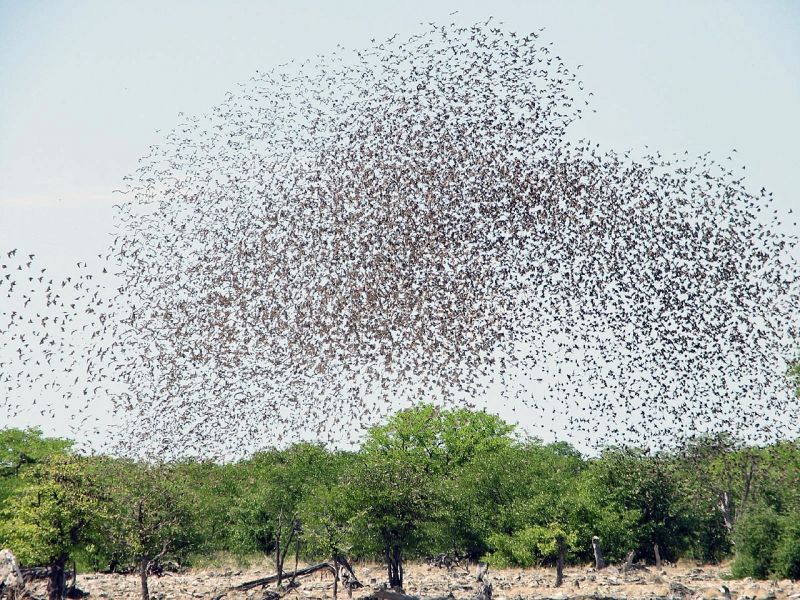
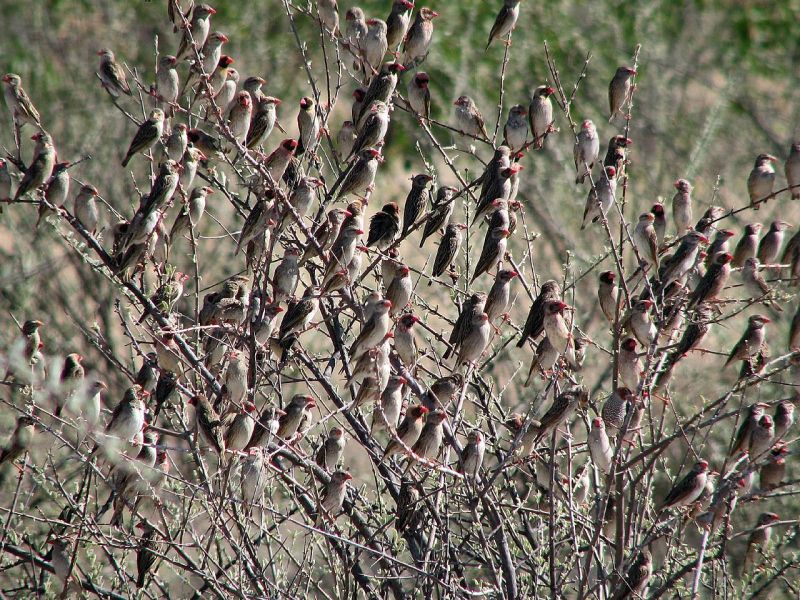
9 Penguins
Penguins, also known as winged penguins, are a group of flightless water birds. They live almost exclusively in the Southern Hemisphere, with only one species, the Galápagos penguin, found north of the equator. Well-adapted to life in the water, penguins have contrasting plumage of light and dark patches and flippers for swimming. Most penguins eat krill, fish, squid, and other forms of marine life they catch while swimming underwater. They spend about half of their lives on land and the other half in the sea.
Although not the only species living in Antarctica, penguins are endemic to the world's south pole and not found anywhere else. The reason this animal can survive in such harsh weather conditions is because they have a body structure that helps adapt to cold climates:
The penguin is cold tolerant because it has a specially designed "fur coat" to keep warm, block the wind as well as shake off water after feeding. Many people think that penguins have no feathers. However, in fact, penguins have the highest (thickest) feather density of any other bird.
One thing that is also extremely important for them to be able to comfortably dive in the freezing cold water is the thick layer of fat given by mother nature. You may not know, the average penguin has up to 30% of its body weight is fat.
The third is the herd lifestyle. Penguins often live in large flocks, up to thousands, and individuals in the flock can warm each other before the bone-chilling cold in Antarctica.
The body structure can withstand the cold and the habit of living in groups helps the penguins to adapt to the harsh environment in Antarctica. Some people will wonder if the North Pole is any different from the South Pole, even though the North Pole is not as cold, it is still an ideal habitat for penguins. Perhaps the first simple reason is that they cannot fly to fly. Escape the polar bears and snow foxes that stalk the flocks of birds that nest here in the summer. If penguins live in the Arctic, they are no more than a lucrative prey for the two carnivores above. The second reason is that Antarctica is too safe for them. There is no threat at all, so they don't have to worry about being hunted when nesting and this is a very safe land for long-term settlement.


10 Bats
The order Bats (scientific name: Chiroptera) is the order with the second largest number of species in the Mammal class with about 1,100 species, accounting for 20% of mammals (the Rodent order is at the top with 40% of the species). The Greek word Chiroptera is a combination of two words: cheir (χειρ) "hand" and pteron "wing". As the name suggests, their forelimbs are similar to those of a human hand, with the fingers connected by skin membranes and forming wings. (In bats, to be precise, the wing is made up of a membrane that connects the bones of the arm and fingers.)
Bats are the only mammals that can fly. Some other animals such as flying weasels, flying squirrels... look like they can fly, but they can only glide - for a limited distance. About 70% of bat species eat insects, the rest mainly eat fruits and only a few species are carnivores. Bats are essential for ecology because they play the role of pollinating flowers or dispersing plant seeds, the dispersal of many plant species depends entirely on bats. The smallest bat species is the Kitti pig-nosed bat, which is only 29–33 mm long and weighs about 2 grams. The largest species is the large golden-headed fruit bat with a wingspan of 1.5 m and a weight of about 1.2 kg.
Species in this order have much in common with herbivores and can be considered a clade of insectivores adapted for flight. The forelimbs transform into leathery wings. Fingers, except for the first finger, are very long and stretchy with thin, hairless skin. The membrane connects not only the forelimbs to the hind limbs, but also the hind limbs to the tail. Large pectoral muscles. Bats are also featured with a unique hanging posture (hanging upside down).
Bats emit ultrasound with a frequency of 50,000 - 70,000 Hz. By receiving ultrasound into the ear, the bat can estimate the distance of an obstacle. However, any bat does not only use pure positioning ability, but also combines observation from the eyes while flying. With bats that often eat fruit, their visual system is very developed, with a position right on the head. Particularly for insectivores, they have smaller eyes, often used to determine altitude above the ground, perceive light levels, distinguish day and night to choose the appropriate hunting time, assess size. prey or obstacles, as well as navigation in flight for prey.


11 Honeybees
In a colony there are queen bees, male bees and worker bees. The queen bee has a body length of 20-25 mm. Short wings, short needles. Male bees: 15 - 17 mm long body. No fuse, big wings. The male bee has only one function, which is to mate with the silk queen. Worker bees: are female bees whose genitals are degenerate, unable to fertilize. Worker bees do all the work of the bee colony: guarding the hive, producing royal milk to feed the larvae, sucking nectar and refining it into honey.
In the honey bee society, a few larvae are selected as queens and the rest as worker bees. For honey bees, enzymes in the intestines of honey bees have the ability to neutralize the poison of pesticides commonly used to kill mites in honeycombs. Honey bees have hairs on their eyes to collect pollen. Bees have 5 eyes - 3 small eyes on the top of the head and 2 large eyes in the front. A bee needs to find 4,000 flowers to make one tablespoon of honey.
Regarding natural enemies, in addition to the threat from viruses (which are the main cause of the decline of honey bees) and poisonous fungi, North American honey bees also encounter parasitic flies that turn into flying corpses that are female flies. Apocephalus borealis injects eggs into the victim's abdomen. The fly larvae, after eating the organs in the chest area of the bees, will gouge the body of this creature and come out.
It has been suggested that honey bees have Asian ancestry, contrary to the previous view that they originated in Africa. With genetic analysis to decipher the evolutionary history of honey bees, honey bees (Apis mellifera) have an ancient lineage of bees that live in holes. These ancient bees originated in Asia about 300,000 years ago and then spread to Europe and Africa. An evolutionary tree constructed from genome sequences does not support the idea that honey bees originated in Africa. The number of honey bees has been affected by climate change. Honey bees are the leading pollinators, at least a third of the food people eat every day is crop products pollinated by bees.
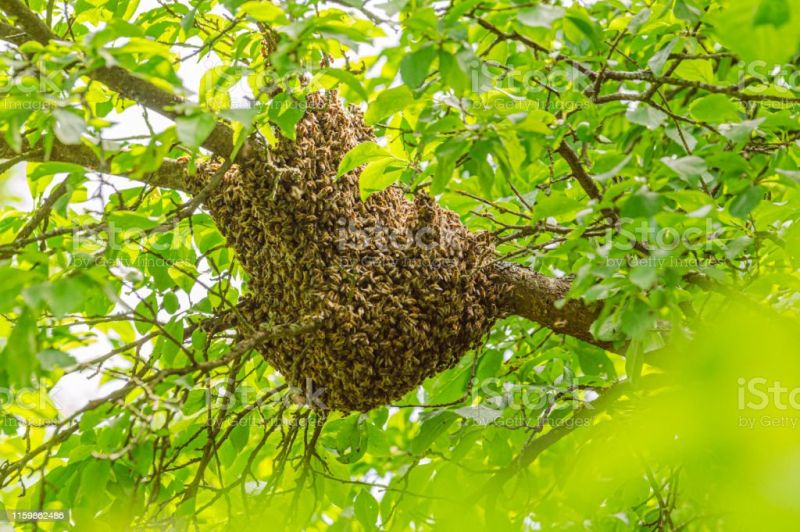

12 Sardines
Sardines, known in English as pilchard or sardine, are several species of small oily fish in the herring family. Sardine is named after a Mediterranean island of Sardina. Sardines have a long, oval-shaped body. Their backs are bluish or brown, and their bellies are silver. Sardines eat algae, fish eggs, larvae and small shrimp. During the day sardines are at a depth of about 30 - 60 m and at night they emerge at a depth of 15 - 30 m. Sardines have an accurate biological clock, similar to that of salmon in the West. Sardines eggs hatch in fresh water, the fry grow up along the miles of rivers and streams flowing into the sea so that when spring comes, the next spawning season they return to the right place where they were born to do their duty. is procreation.
Sardines often migrate in groups, they often swim in the number of millions of fish, they split the water and rush away in the ocean, the migration of sardines creates beautiful dances in the ocean. The sight of millions of sardines swimming in schools and huddled together in the annual giant migration is a spectacular sight. The sardines glittered with silver, moving in large schools, creating strange shapes. However, when they detect an obstacle, they move to all sides to avoid it. When encountering enemies or obstacles, the huge school of fish quickly transforms, creating spectacular scenes. To fight against large fish such as sharks, dolphins, whales or buzzards surrounding, the sardines form a giant sphere, 20m in diameter, billowing away[4] with the number of tens of millions of fish. , the fish is really a giant sphere on the ocean floor.
Sardine migration is the phenomenon of sardines moving together in large waves of fish and moving to warm waters according to their instinctive schedule. The migration of the sardines is 15 km long, 3.5 km wide and 40 meters deep. The journeys of these huge schools of fish are so large that they can be seen from satellites. Such a spectacular sight is known as the sardines run or the sardines run, and it is a great annual migration.

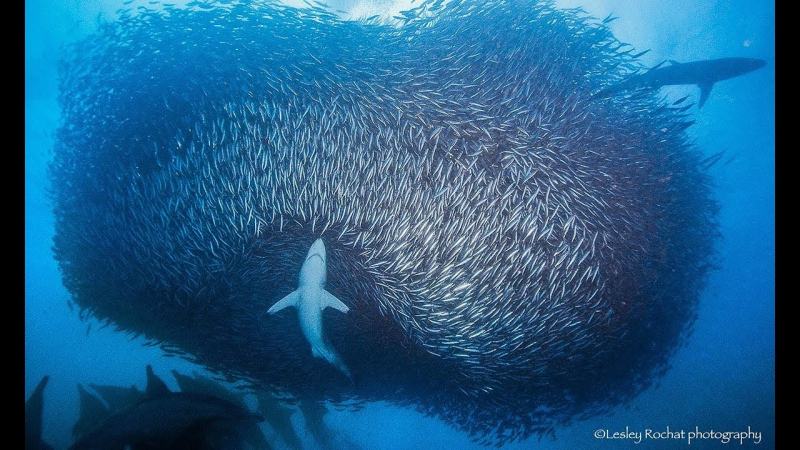
13 Zebras
Zebras evolved from Old World horses about 4 million years ago. It has been suggested that zebras are multiphyletic and that equine stripes have evolved more than once. Large stripes are admittedly of little use on horses that live in low densities in the desert (such as donkeys and horses), or those that live in colder climates every year with rough undercoats (such as some horses. ). However, molecular evidence suggests that zebras are monophyletic.
Researchers used GPS devices to track the migration of eight zebra species from Namibia to Botswana over several months. Their migratory distance is up to 500km in the Serengeti wildlife reserve. This is the longest historical land migration ever in the mammal world.
In addition, biologists were amazed at the migratory tendency of zebras, which walk in a straight line compared to other species with tortuous routes. That is also why the migratory distance of zebras is often longer than that of wild, mammals such as wildebeest, wildebeest, hyena, elephant...
In addition, the study also provides evidence of negative human impacts on wildlife habitats, such as the construction of borders, highways, trains, etc. natural migration. That leads to serious harm in finding food and water, threatening the survival of wildlife species in the face of the current erratic climate.


14 Monarch Butterfly
Monarch butterflies are small animals that number in the millions in each migration. This is the only butterfly that migrates in both north-south and south-north directions like birds. However, due to its short life cycle, during the migration, none of the butterflies survived. They lay eggs during their migration.
These analyzes have renewed understanding of the history of migratory butterflies with this distinctive bright orange and black color combination because many scientists previously thought that the migration phenomenon appeared only recently. These misunderstandings stem from the fact that most members of the monarch butterfly family that breed outside of North America are tropical, non-migratory species, so scientists have always thought that their ancestors were also so and only started to migrate in the 19th century.
But the results of scientists' research based on pedigree genetics show that this migratory butterfly is descended from migratory butterflies that appeared more than 2 million years ago. They also found that the butterfly's ability to migrate is linked to a single gene morphology that regulates the formation and function of the muscles on their wings. The new results should appeal to all the speculations around. When will we no longer be able to witness this interesting phenomenon lasting more than two million years because now the number of butterflies has decreased significantly. In 1996, billions of these insects completed the north-south route, but last year the number dropped to just 35 million. This decline is thought to be the result of deforestation, drought conditions and the use of pesticides on milkweed, the main food and place where the butterfly lays its eggs.
Scientists hope the results of the study will suggest ways to preserve the migratory habits of this butterfly.


Above is the top of the largest herds in the world's largest animal world today that Toplist learns and provides to readers. Follow along to know more interesting things about the animal world in the following articles.










